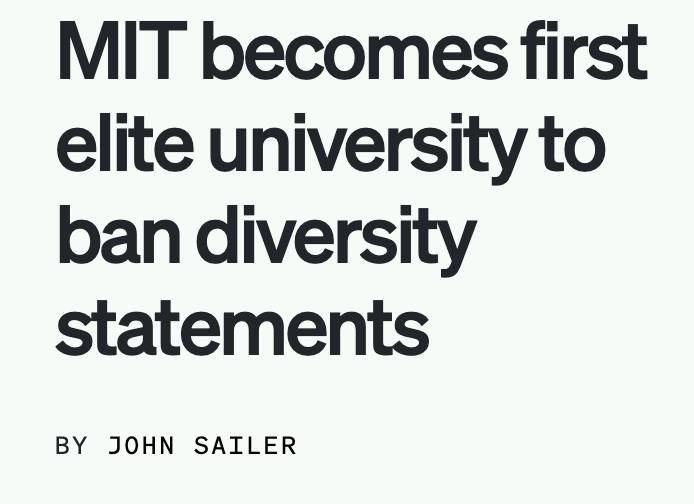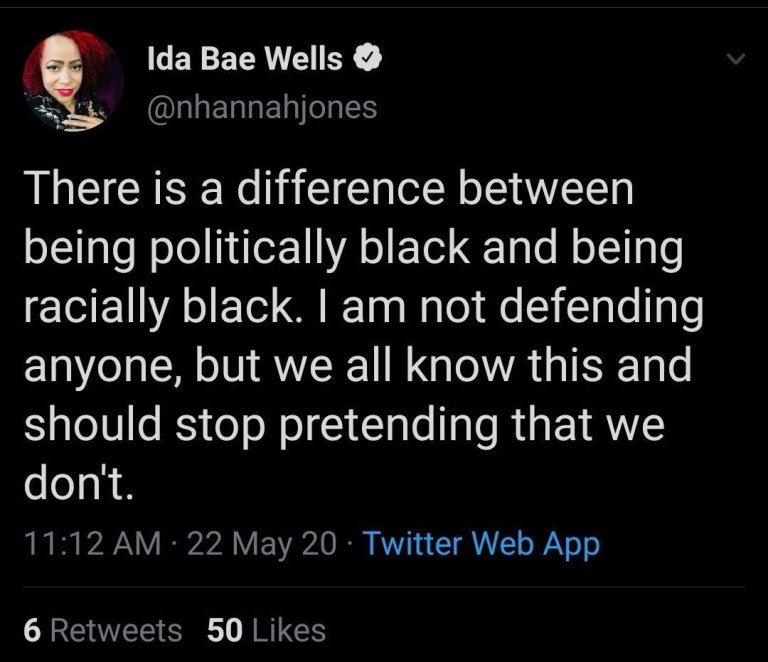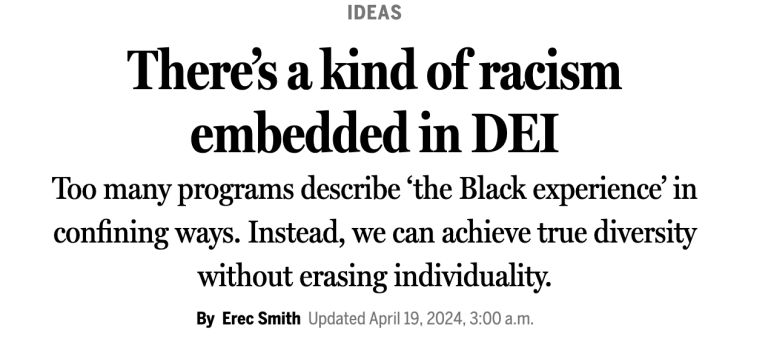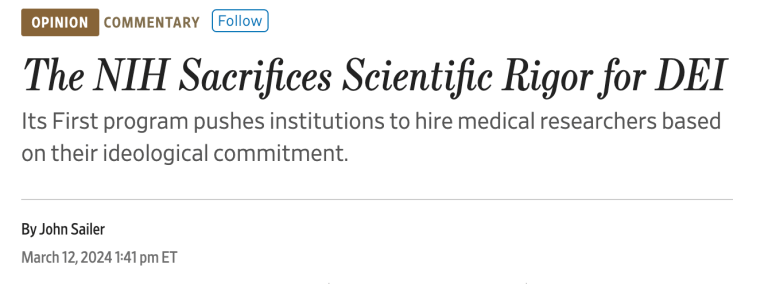I was sent this article from The Economist (as usual, authors’ names aren’t given), and I’m not sure whether that site leans right or left. Nor do I really care, except that people might tend to dismiss its argument and its data on political grounds. And, as usual, that would be a mistake.
The thesis here—and I’ll show data—is that American universities are going downhill in many ways: bigger bureaucracy, less respect from the public, grade inflation, lazier students, declining in world rankings, and so on. Some of these contentions are new to me, but the article does paint a picture of a system going downhill. I’ll show the data and the Economist‘s indictment below.
Click to read the headline, or find the article archived here.

Excerpts from the piece are indented. First, their thesis:
But thoughtful insiders acknowledge that, for some years, elite universities, particularly those within the Ivy League, have grown detached from ordinary Americans, not to mention unmoored from their own academic and meritocratic values.
In theory, these difficulties could promote efforts to correct flaws that are holding back elite education in America. But they could also entrench them. “America’s great universities are losing the public’s trust,” warns Robert George, a legal scholar and philosopher at Princeton. “And it is not the public’s fault.”
This is accurate: other surveys show that public trust in American institutions of higher education is waning. And this despite the article’s claim that elite universities, at least, are getting richer and richer, both because tuition has risen so rapidly and because universities are now managing their endowments in a riskier manner. That new style of management has paid off since the stock market and real estate have boomed in recent years,
What this has done is created a two-tier system of universities: the “elite” ones, where everyone aspires to go, and the rest of the pack, which hasn’t changed that much:
All this has opened a chasm between America’s top-ranked colleges and the rest. A mere 20 universities own half of the $800bn in endowments that American institutions have accrued. The most selective ones can afford to splash a lot more money on students than the youngsters themselves are asked to cough up in tuition, which only makes admission to them more sought-after. Acceptance rates at the top dozen universities are one-third of what they were two decades ago (at most other institutions, rates are unchanged). Lately early-career salaries for people with in-demand degrees, such as computer science, have risen faster for graduates from the most prestigious universities than for everyone else. Higher education in America “is becoming a ladder in which the steps are farther apart”, reckons Craig Calhoun of Arizona State University.
Despite this, the reputation of elite universities has dropped, especially compared to Chinese ones, whose scholars are producing relatively highly-cited scientific papers. Two figures from the paper. These changes in research reputation are small, but they are all negative for the elite U.S. universities:

Same for highly-cited scientific papers; the Chinese are booming here while American papers are falling:

Now I don’t really care that much about whether other countries are doing okay or booming in scientific papers compared to the U.S., as science is a worldwide endeavor and, as I’ve said about this trend, “a rising tide lifts all boats.” But I care more about the reputation of elite universities, largely because I went to one for my Ph.D. and worked at one for 3 decades. I would care if the top American colleges stopped providing quality education, though maybe that’s just snobbery on my part. And of course the reduction in highly-cited papers is a side effect of a relative degeneration of quality education in the U.S.
But perhaps that’s just compared to China, and we’re doing as well as ever. But that doesn’t seem to be the case, either. Here are some of the factors that the article points out are dragging down our top universities.
Bloated bureacracy. If you work at one of these schools, you’ll have noticed this:
As challenges from abroad multiply, America’s elite universities are squandering their support at home. Two trends in particular are widening rifts between town and gown. One is a decades-long expansion in the number of managers and other non-academic staff that universities employ. America’s best 50 colleges now have three times as many administrative and professional staff as faculty, according to a report by Paul Weinstein of the Progressive Policy Institute, a think-tank. Some of the increase responds to genuine need, such as extra work created by growing government regulation. A lot of it looks like bloat. These extra hands may be tying researchers in red tape and have doubtless inflated fees. The total published cost of attending Harvard (now nearly $80,000 annually for an undergraduate) has increased by 27% in real terms over two decades.
The next item explains much of the bloat:
The expansion of DEI initiatives. This is another thing you’ll have noticed if you work at an elite school. But it’s happening pretty much everywhere. As you probably know, Florida just passed a law, largely in response to the Supreme Court’s banning race-based admission, getting rid of the DEI programs in state universities. In some places, like Michigan, the bloat—and salaries devoted to DEI—is stunning. DEI officials in Michigan colleges can earn more than $200,000 per year. From the article:
More often blamed are administrative teams dedicated to fostering “Diversity, Equity and Inclusion” (dei). They have grown in size as the number of administrators of all kinds has increased. They have an interest in ensuring that everyone on campus is polite and friendly, but little to gain from defending vigorous debate. In theory they report to academic deans, says Steven Pinker, a psychologist at Harvard and a member of a faculty group committed to defending academic freedom; in practice they move laterally from university to university, bringing with them a culture that is entirely their own. Critics of dei departments insist these offices have helped soak campuses with unsophisticated “woke” ideologies that depict complex problems as simplistic battles.
Changing admission policies favoring equity over merit. This itself may be changing, as in the last several weeks schools like Dartmouth and Brown have reinstated the use of standardized tests like the SAT as requirements for application. (In many places they became optional or were, as in California, not wanted at all.) Reducing the importance of standardized tests was originally done to boost equity of minority groups, but that wasn’t often admitted by colleges; “holistic” admissions were simply said to be better judges of future success, and schools boasted that there was no tradeoff between merit and equity.. But this is not the case—SAT scores remain the best predictor of academic success as well as admission to good graduate schools. I’m hoping that the pendulum will swing back towards merit again, though I still favor a form of affirmative action: preferential admission of minorities when they are just as qualified as nonminority applicants. From the article:
In theory the Supreme Court’s decision to outlaw racial preferences last year should encourage posh universities to junk admissions practices that are even more irksome—such as favouring children of alumni. Instead many have made their admissions criteria even more opaque, potentially damaging universities’ meritocratic pretensions further. At the start of the pandemic, most stopped requiring applicants to supply scores from standardised tests. Now hard-to-evaluate measures such as the quality of personal statements are having to carry more weight. For some institutions that has proved unsatisfactory: in recent weeks Dartmouth and Yale announced that they will require standardised test scores from applicants once again. They are the first Ivies to do so.
Lowering of standards. The article implies that students are getting lazier with time. Over the three decades I taught here, I can’t really vouch for that, at least in undergraduate evolution class. Because of my lack of experience in more than one class, I’ll just reproduce what the article says, though of course grade inflation everywhere is real and has been amply documented. Nowadays everyone gets As, which of course reduces the value of even calculating grade-point averages. (Putting the median grade in a course on students’ transcripts would help with this.)
Universities stand accused not just of tolerating small-mindedness among their students, but of perpetuating it. One theory holds that, if elite universities worked their students harder, they would have less time and energy to fight battles over campus speech. Between the 1960s and the early 2000s the number of hours a week that an average American student spent studying declined by around one third, notes Rick Hess of the American Enterprise Institute, a conservative think-tank. Yet grades do not seem to have suffered. At Yale, the share of all grades marked “A” has risen from 67% in 2010 to around 80% in 2022; at Harvard it rose from 60% to 79%.
Boards of governance (trustees, etc.) have become too weak to enforce a climate of excellence. I know nothing personally about the University of Chicago’s Board of Trustees, but at least at Harvard the Board of Overseers’ spinelessness was a major factor in prolonging the kerfuffle about ex-President Claudine Gay. The Overseers first denied charges of plagiarism, threatened the New York Post for trying to publish those allegations, continued to deny them, and then, after the outcry—largely prompted by Bill Ackman—grew too loud, finally asked Gay to resign. Further, the Harvard Overseeers, who are nearly wholly responsible for putting in place policies like freedom of expression and institutional neutrality, have done almost nothing on this account. In the Boston Globe, Steve Pinker called for Harvard to reform itself in five areas, and there’s now a group of professors at Harvard to apply pressure on the administration to behave properly. Fingers crossed.
From the article:
University boards appear especially weak. They have not grown much more professional or effective, even as the wealth and fame of their institutions has soared. Many are oversized. Prestigious private colleges commonly have at least 30 trustees; a few have 50 or more. It is not easy to coax a board of that size into focused strategic discussions. It also limits how far each trustee feels personally responsible for an institution’s success.
Furthermore, trusteeships are often distributed as a reward for donations, rather than to people with the time and commitment required to provide proper oversight. Universities generally manage to snag people with useful experience outside academia. But many trustees prefer not to rock the boat; some are hoping that their service will grant children or grandchildren a powerful trump card when it comes to seeking admission. Too many see their job as merely “cheerleading, cheque-writing and attendance at football games”, says Michael Poliakoff of the American Council of Trustees and Alumni, an organisation that lobbies for governance reform. And at many private universities the way in which new trustees are appointed involves cosying up to current ones or to university authorities. Outsiders can struggle to be picked at all.
There’s a lack of political balance on faculties. Everyone knows that university faculties are almost completely on the Left side of the political spectrum. Look at this plot:

And it’s even more skewed at elite universities:
A second trend is the gradual evaporation of conservatives from the academy. Surveys carried out by researchers at ucla suggest that the share of faculty who place themselves on the political left rose from 40% in 1990 to about 60% in 2017—a period during which party affiliation among the public barely changed (see chart 3). The ratios are vastly more skewed at many of America’s most elite colleges. A survey carried out last May by the Crimson, Harvard’s student newspaper, found that less than 3% of faculty there would describe themselves as conservative; 75% called themselves liberal.
One possible reason is that the definition of “liberal” has changed: that American politics in general have become more right wing, so that more centrist professors will now identify themselves as being far left or liberal. But I don’t think that’s true. Further, the article claims that conservatives have been forced out of academia or aren’t even being hired in the first place. I don’t know the reason, but it is true that at least in elite universities, there is groupthink that demonizes conservatives. (Remember how Judge Duncan was treated at Stanford Law School?)
But I still think schools would benefit from increasing the diversity of political opinions, because sometimes conservatives have some good arguments, and at any rate without opposition from the other side, liberals have no way to test or hone their ideas. I would personally would benefit from more conservatives in my school, even though I identify as a classical liberal.
Given these problems, the solution is clear; do the opposite of what’s causing them. Pare down DEI, get better boards of trustees, put more emphasis on merit in admissions, require students to do more, somehow curb grade inflation (that seems nearly impossible to me!), hire more conservatives, and inculcate students with more information about free speech (we’re doing that here; see below). The return to an emphasis on merit seems to me the most important, but of course “progressives” define merit in ways that differ from how the term was used historically.
Here are a few suggestions in two paragraphs, with both Lukianoff and Ginsburg (head of the University of Chicago’s Forum to promulgate free expression) being liberals.
Better for universities to heal themselves. Smaller, more democratically selected boards would provide better oversight. More meritocratic admissions would improve universities’ standing. Greg Lukianoff of fire wants to see campuses stripped of bureaucrats “whose main job is to police speech”. Instead universities should invest in programmes teaching the importance of free and open debate, argues Tom Ginsburg of the University of Chicago, who runs a forum designed to do just that: “If your ideas aren’t subjected to rigorous scrutiny, they’re not going to be as good,” he explains.
Reformers would also like more people in the political centre, and on the right, to make careers in academia. No one thinks this will happen quickly. But college bosses could start by making it clear that they will defend the unorthodox thinkers they already have on their payrolls, reckons Jim Applegate, who runs a faculty group at Columbia University that aims to promote academic freedom. They could discourage departments from forcing job applicants to submit statements outlining their dei approach (one study a few years ago suggested this was a condition for a fifth of all university jobs, and more than 30% at elite colleges). Lately these have looked less like honest ways of spotting capable candidates and more like tests of ideology.
h/t: Jean













